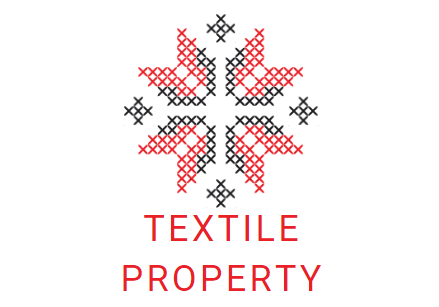Molecules of Basic dyes are invariably organic cations and they are preferably called cationic dyes. They usually have brilliant colors and high tinctorial strength; some are even fluorescent.
Many basic dyes are now obsolete because of their very poor lightfastness on natural fibers but a few are still used for dyeing paper and leather and for making inks.
Cationic dyes will dye fibers with anionic sites by a process of ion exchange. This is usually a simple direct dyeing process.
Anionic auxiliary products must be avoided as they may precipitate cationic dyes in the form of organic salt. In dyeing protein fibers with cationic dyes, acids retard dye absorption by suppressing the dissociation of the anionic carboxylate groups in the fibers, thus making the fiber more cationic and inhibiting adsorption of dye cations.

Cationic dyes have very low substantivity for cotton unless excessive oxidation has generated anionic carboxylate groups. For dyeing cotton with cationic dyes, the cotton was usually mordanted with tannic acid fixed with tartar emetic. The insoluble, anionic tannin attracts colored dye cations, just as it repels dye anions when on a nylon surface after back-tanning.
Basic Dye – Why so called?
Basic dyes contain chromophore which is basic or cationic in nature. When they are made soluble in water, they act like a base that forms colored cationic salt and react with the anionic site of the substrate.
As they contain basic or cationic chromophores in their structure, they are called Basic dyes.

Properties
- These are cationic dyes
- These dyes can produce bright shade
- They have high tinctorial value
- They don’t have any affinity for cotton
- But cotton can be printed or dyed only by mordanting before the coloration process.
- They are suitable for acrylic, nylon, modified polyester or jute materials.
- In the presence of glacial acetic acid, their solubility is very good in water.
- They have high color strike, therefore exhibits poor levelling properties.
- They exhibits good wet fastness
- Light fastness is poor to moderate
Dyeing With Basic Dye
- Today, the major use of cationic dyes is in dyeing anionic acrylic and modacrylic fibres and, to a much lesser extent, modified polyester and nylon.
- Dye adsorption by acrylic fibers involves interaction between anionic sulphonate and sulphate polymer end groups and the cationic dye molecules.
- This results from the co-polymerization or the residues of anionic polymerization inhibitors.
- This anionic property makes the acrylic fiber suitable to dye with basic dye by strong ionic bond.
Chemical Structure of Basic dye
Cationic dyes belong to a variety of different chemical classes. Many of the older basic dyes were di- and triphenylmethane, heterocyclic azine, oxazine or polymethine, or aminoazo compounds.
In many cases, the cationic charge is extensively delocalized over the entire dye molecule. Typical anionic counter ions include chloride, oxalate (C2O4 2–) and tetrachlorozincate (ZnCl4 2–) ions.
Since the introduction of acrylic fibers in the 1940s, new cationic dyes have been developed specifically for dyeing these fibers. Many of these have quaternary ammonium groups with a localized cationic charge that is not part of the chromophore.
Dyeing of Acrylic with Basic Dye
Nowadays, basic dye is mainly used for dyeing acrylic and mod acrylic. Jute, modified polyester, nylon is also dyed with basic dyes in a little extent.
Preparation of Materials
- Simply, desizing, scouring and followed by bleaching is all needed to prepare the acrylic goods.
- For sizing purpose, starch or PVA is used normally which are mostly soluble. So, a combined desizing and scouring can be carried out.
- Generally, ammonia or trisodium pyrophosphate (Na3HP2O7) are used for scouring.
- Use of a non-ionic detergent eliminates the possibility of blocking the dye sites in fiber. If any cationic auxiliary chemical is used, it might have any substantivity towards anionic groups which eventually may precipitate dye molecules in the bath.
- If a severe drying is carried on, it may yield a slight yellow cast on acrylic goods. No matter, it can be compensated by bleaching with sodium chlorite and methanoic acid. An optical brightening agent may also be used to impart whiteness to the goods.
- If there is a little bit of traces of chlorine, some cationic dye can react sensitively. Even it may impair the shades while dyeing. To avoid this problem, the fabric bleached with sodium chlorite should be given an anti-chloro treatment.
- Or sodium bisulphite or thiosulphate can be added to avoid the problems associated with municipal water where traces of chlorine is found.

Dye Bath Preparation
- After pasting with acetic acid, boiling water is poured to the dye powder.
- Some cationic dyes have intensified color due to delocalized cation.
- The dissolution of solid basic dye is quite tough as they form gummy texture.
- To avoid such circumstances, dye can be prepared with methanol as well as warm water.
- Acidic pH is maintained for dye bath preparation.
Why choose acidic medium for dye bath preparation?
- Some cationic dyes are not stable in boiling water.
- Some cationic dye interacts with alkali and produce colorless compounds. For example, ammonium ion neutralizes to produce a free amine group.
- So, to avoid all these problems, weakly acidic medium is preferred for dyeing in this case.
Dyeing Procedure
Anionic groups including terminal sulphate and sulphonate group that arises from the persulphate polymerization initiator are often seen in acrylic fibers.
In some acrylic, before the polymerization process, similar co-monomer or carboxylate group of acrylic acid is mixed with acrylonitrile. It causes the dye-fiber attraction.
- A weakly acidic solution is formed with acetic acid, dispersant, wetting agent (non-ionic) and sodium acetate for the dyeing procedure.
- Sequestering agent is also used to eliminate the presence of any metallic ions.
- Dye is pasted with acetic acid maintaining a stable pH of 4.5-5.5. sodium acetate is used to maintain this pH as it helps to buffer the dye solution.
- A crucial control over time, temperature along with pH and cationic retarding agent ensures a level dyeing. The cationic retarding agent initially block the anionic site in fiber and after that dye cations replaced them slowly with the time.
- Anhydrous sodium sulphate counteract the negative surface charge. The blocking of some anionic site are also done by sodium ions in the fiber. Approximately 2.5 g/l anhydrous sodium sulphate is enough for it.
- For any further dye addition, the temperature lowers down to 80°C.
- Any crack mark, texturized filament or crease may seen on acrylic goods as they are thermoplastic.
- To overcome such obstacles, after dyeing, the bath temperature is lowered down to 50–60 °C slowly. fast cooling or cold water addition is strictly prohibited as they may set the crease on the acrylic materials immediately.
- finally after rinsing, a mild scour should be given. Detergent, acetic acid and softening agent is all for the scouring process.

Last Thought on Basic Dye
Basic dye is a good cheap alternative while dyeing acrylic or modacrylic as Disperse dye doesn’t build up well on acrylic. They are used only for pale shades.
You can check the article on: Dyeing of CDP with Basic Dye.

